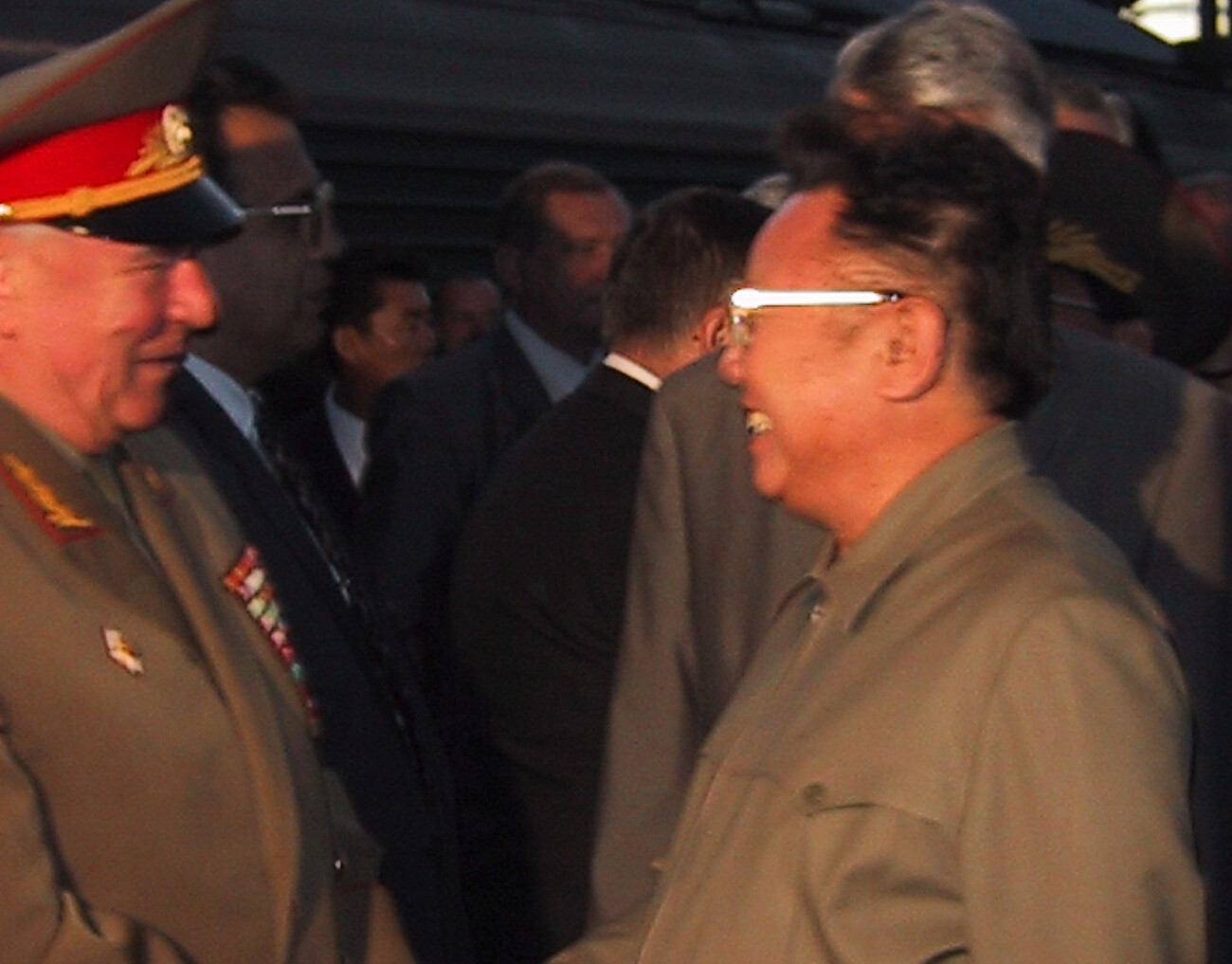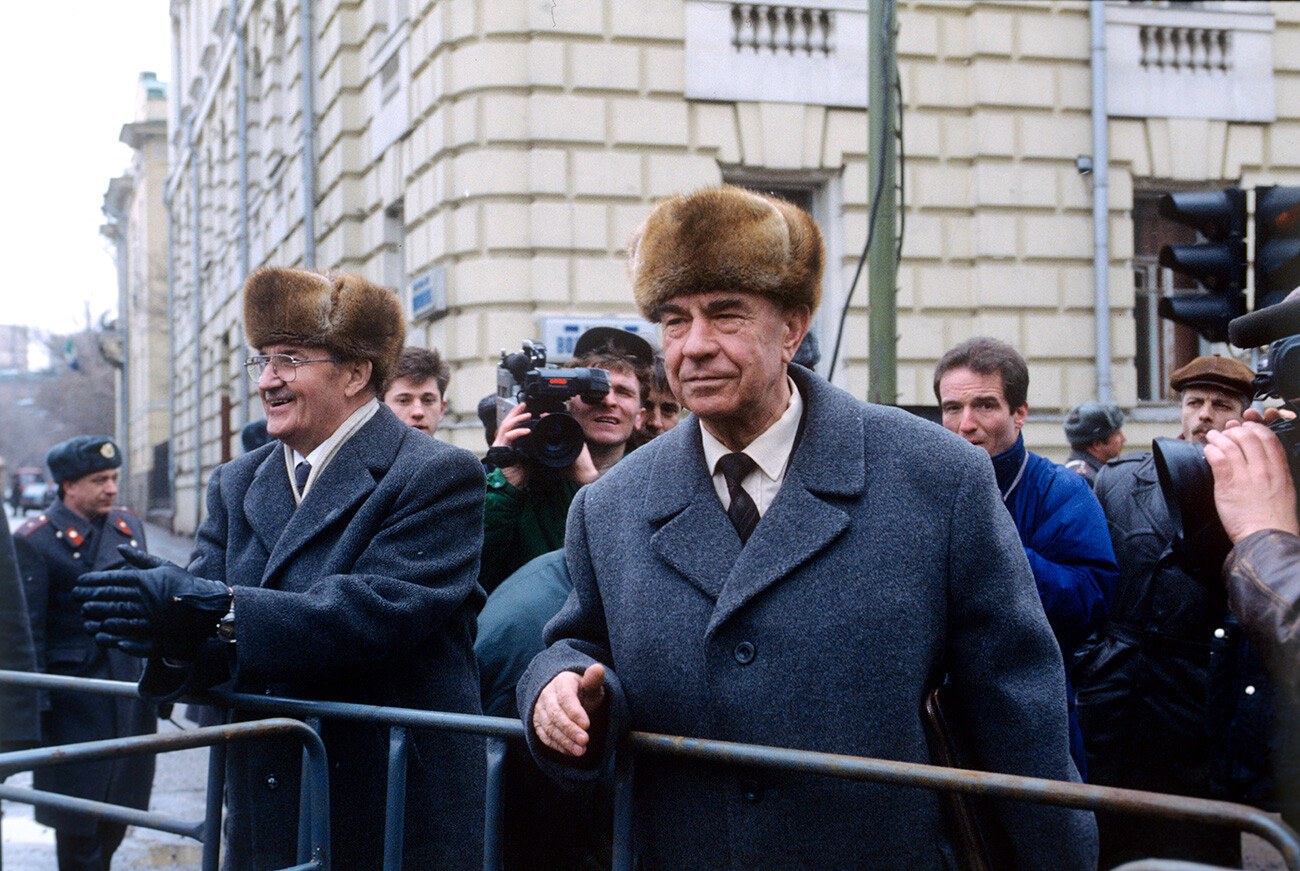Dmitry Yazov: The last ‘Marshal of the Soviet Union’ (PHOTOS)

Marshal of the Soviet Union Dmitry Timofeyevich Yazov lived a long and extraordinary life: He fought in World War II, was in the epicenter of the Cuban Missile Crisis, was friends with Kim Il Sung, rose to the position of USSR Minister of Defense and was even imprisoned on charges of attempting to seize power.
 Dmitry Yazov, Minister of Defence of the Soviet Union, reviews troops during a military parade in Moscow's Red Square marking the 45th Anniversary of the Victory over Nazi Germany in World War II, 1990.
Dmitry Yazov, Minister of Defence of the Soviet Union, reviews troops during a military parade in Moscow's Red Square marking the 45th Anniversary of the Victory over Nazi Germany in World War II, 1990.
When the war against Nazi Germany broke out, Yazov, who hailed from a small village in Siberia, was not even 17 years old. Having added the necessary number of years to his age, he volunteered to serve in the Red Army and was sent to the Moscow Red Banner Infantry School, which had been evacuated to Novosibirsk by this time.
In the Summer of 1942, Junior Lieutenant Dmitry Yazov found himself at the front near Leningrad. "Although I was already an officer, I was really just a young lad! And many soldiers in the division were 45-50 years old. Can you imagine? They could easily have said to a junior officer like me: ‘Come here, son!’ They were old enough to be my father…" he recalled years later.
 Cadet Yazov in 1941.
Cadet Yazov in 1941.
The future defense minister was wounded several times during the war. The facial wound which he received during an operation to break through to the besieged city of Leningrad in January 1943 proved to be particularly dangerous.
"A German threw a grenade and I ducked," Yazov said in an interview. "I had just opened my mouth to shout something to warn my subordinates when the grenade exploded. Here, under my eye, I still carry a fragment of it. It's been there since the war." It could not be operated on because of its proximity to the optic nerve.
When victory came, Dmitry Timofeyevich was in the Baltic region, where he had been fighting against the German grouping surrounded in the Courland Pocket. He decided to devote his future life to service in the armed forces.
 German military rquipment seized by Soviet troops after the surrender of the Wehrmacht's Army Group Courland.
German military rquipment seized by Soviet troops after the surrender of the Wehrmacht's Army Group Courland.
At the very height of the Cuban Missile Crisis in 1962, Colonel Yazov, as commander of the 400th Motorized Rifle Regiment, was sent to Cuba to defend the Island of Freedom against a possible invasion by U.S. troops.
"The mood in those days was jittery and we were constantly being informed of American reconnaissance planes patrolling overhead. The orders we received would be mutually exclusive: 'shoot it down - don't shoot it down', 'open fire - don't open fire'," is how the marshal recalled those days.
 A Soviet merchant ship, a U.S. Navy destroyer and a coastal patrol aircraft during the Cuban Missile Crisis.
A Soviet merchant ship, a U.S. Navy destroyer and a coastal patrol aircraft during the Cuban Missile Crisis.
In the following years, Yazov commanded troops on the territory of Czechoslovakia, in Central Asia and in the Far East, where he met and even became friends with then North Korean President Kim Il Sung.
On May 30, 1987, Dmitry Timofeyevich was appointed USSR minister of defense and, three years later, he was promoted to the rank of marshal. He ended up being the last marshal in the country's history.
 North Korean leader Kim Jong Il (R) greeted by Marshal of the Soviet Union Dmitry Yazov upon his arrival at Moscow's Yaroslavsky railway station.
North Korean leader Kim Jong Il (R) greeted by Marshal of the Soviet Union Dmitry Yazov upon his arrival at Moscow's Yaroslavsky railway station.
With Dmitry Timofeyevich in charge of the country's military establishment, Mikhail Gorbachev was putting through the significant state reforms that came to be known as ‘perestroika’ and normalizing relations with the West: large-scale nuclear disarmament was under way, the strength of the armed forces was being cut and Soviet military contingents were being withdrawn from Eastern Europe.
As defense minister, Yazov was involved in all these processes, although his attitude was one of extreme disapproval. "We criminally axed our excellent ‘Oka’ operational-tactical missile. And this was despite the fact that its specifications did not fall within the criteria of the intermediate- and shorter-range missile treaty… Why did we throw our Temp-S missiles to the wolves? They should not have been given away," he lamented years later.
 Dmitry Yazov and Mikhail Gorbachev in 1990.
Dmitry Yazov and Mikhail Gorbachev in 1990.
It wasn't just Yazov who was voicing dissatisfaction with Gorbachev's reforms. There were opponents of the course set by the general secretary among representatives of the top political elite and other leaders of the security, military and law enforcement agencies. This confrontation ultimately led to the events of August 19-22, 1991 known as the ‘August coup’.
This was when USSR Vice-President Gennady Yanayev, KGB Chairman Vladimir Kryuchkov, Interior Minister Boris Pugo, Defense Minister Dmitry Yazov and a number of politicians made a stand against preparations to transform the USSR into a confederated Union of Sovereign States. "Things are heading towards the collapse of the country and, instead of a strong state, we are being offered a feeble confederation of republics headed by presidents who'll be able to do what they want," was Yazov's comment on the initiative.
These opposition figures entered into talks with Mikhail Gorbachev, who, at that moment, was at a government dacha in Foros in southern Crimea. On August 18, after the dialogue had got nowhere, they announced the formation of the State Committee for the State of Emergency in the USSR (Russian abbreviation GKChP), thus entering a standoff with USSR President Mikhail Gorbachev and RSFSR President Boris Yeltsin.
 The ‘August coup’.
The ‘August coup’.
On the night of August 18/19, Yanayev signed a decree appointing himself as acting president of the USSR on the grounds that Gorbachev was unable to discharge his presidential duties "on health grounds".
On the morning of August 19, troops were sent into Moscow on orders from the defense minister - to ensure the "protection of strategic sites", as Yazov was to assert later. The actions of the State Committee for the State of Emergency met with very scant support around the country and protests began in many cities.

After three demonstrators were killed on the night of August 20/21, Yazov ordered the troops out of Moscow. The marshal later asserted that the State Committee had never considered breaking up crowds of protesters: "That would have signified unleashing a real civil war, which I, as an officer and marshal who had sworn an oath of loyalty to the state and the people, naturally could not resort to."
"The trouble was that many of those who were then protesting against our decrees simply failed to grasp the predicament we were in. People had been reduced to despair by an economy that was heading for the abyss, galloping inflation and a coupon system for literally everything from cooking oil to alcohol. They were ready to vote with both hands for the devil incarnate himself!" Yazov lamented.
 The ‘August coup’.
The ‘August coup’.
By August 21, a split had formed in the armed forces and a portion of the military refused to obey the orders of the State Committee for the State of Emergency. It was decided to send a delegation, including the defense minister, to Crimea for talks with Gorbachev. On his return to Moscowб Yazov was arrested. Soon afterwardsб his fellow coup leaders were also detained. The State Committee ceased to exist.
"You know why the State Committee for the State of Emergency failed?" Dmitriy Timofeyevich asked. "I'll be frank: Because there should have been a policy of working with the people. Instead, the approach boiled down to: The tanks have been sent in and that's it… I was urged to have the airborne troops seize all the airports. It would have cost nothing to give the order - easy. But what would it have led to? Only bloodshed. To what purpose?"
 Troops that switched over to the side of the Russian parliament during the 'Augist coup'.
Troops that switched over to the side of the Russian parliament during the 'Augist coup'.
The members of the State Committee were initially charged with treason. Subsequentlyб the charges were changed to participation in a plot to seize power.
Yazov spent 498 days in pre-trial detention at Moscow's ‘Matrosskaya Tishina’ prison. On February 23, 1994, he was amnestied along with other members of the former committee.
 Former USSR Defense Minister Dmitry Yazov in front of the court house.
Former USSR Defense Minister Dmitry Yazov in front of the court house.
In subsequent years, the former minister worked as an adviser to the Defense Ministry and General Staff Academy, wrote books and headed the Officer Fraternity armed forces veterans' foundation and the Marshal Zhukov Memorial Committee public organization.
After the death of Marshal Vasily Petrov in 2014, Yazov became the only living Marshal of the Soviet Union remaining. Dmitry Timofeyevich, himself, died on February 25, 2020, aged 96.
 Russia's Defense Minister Sergei Shoigu (L) and USSR Marshal Dmitry Yazov during a ceremony to present an Order For Merit to the Fatherland (3rd class) and a medal on the 75th Anniversary of Victory in the Great Patriotic War of 1941−1945.
Russia's Defense Minister Sergei Shoigu (L) and USSR Marshal Dmitry Yazov during a ceremony to present an Order For Merit to the Fatherland (3rd class) and a medal on the 75th Anniversary of Victory in the Great Patriotic War of 1941−1945.

